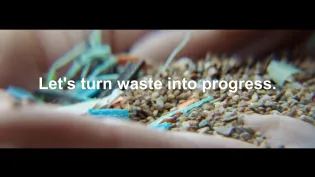Collaborating with residents in the Galapagos to rethink waste
In the Galapagos, waste management has long been a major concern for residents and authorities. For years, recycling was not common practice, and all types of waste were thrown into open air dumps or burned.
To help solve this issue and protect the Galapagos’ fragile ecosystem, Geocycle Ecuador worked to transform waste management practices on Santa Cruz Island.
Preserving a delicate ecosystem
Known as the “Enchanted Islands,” the Galapagos archipelago is a UNESCO Natural World Heritage site.
According to the World Wildlife Fund (WWF), there are nearly 9,000 species living in the Galapagos. Many of these species are endemic to the islands, meaning that they are not naturally found anywhere else in the world. Protecting vulnerable wildlife and their natural habitat is critical to maintaining biodiversity in the Galapagos and preserving it for future generations.
Of the 127 islands that make up the Galapagos, only five are inhabited by humans. However, it is not simply the presence of people that can damage the local ecosystem, but the accumulation of the waste they produce.

Previously, 50% of waste produced had no use and was dumped or burned. These improper waste management solutions result in pollution and contamination of the air, water and soil, leading to disease and hazards for the local animals and plant life.
With the help of Geocycle, residents are embracing a new recycling culture to preserve the beauty of Santa Cruz Island and ensure that plant and wildlife continue to thrive.
Creating a culture of recycling
The change began with a door-to-door educational campaign to introduce recycling to the inhabitants of Santa Cruz Island. Then color-coded trash bags were implemented to facilitate waste collection and sorting:
- Green for organic materials, food and shells
- Blue for glass, clean plastic, paper and cardboard
- Black for non-recyclables
Once collected and sorted at the Fabricio Valverde recycling center, the waste is transported to Continental South America where it will become part of the regenerative, circular economy.
When we receive the materials at our Geocycle Ecuador site, we conduct a thorough analysis to ensure their quality and reliability before transforming them into large-scale resources. Since 2022, we have recovered 59% of the waste generated on Santa Cruz Island and transformed 50 tons of non-recyclables into alternative fuels to power plants in Ecuador.

“This is extraordinary for the Galapagos Islands and our mission of turning the islands into a place without waste. A city where waste has meaning for someone else is a city of the future.”

















